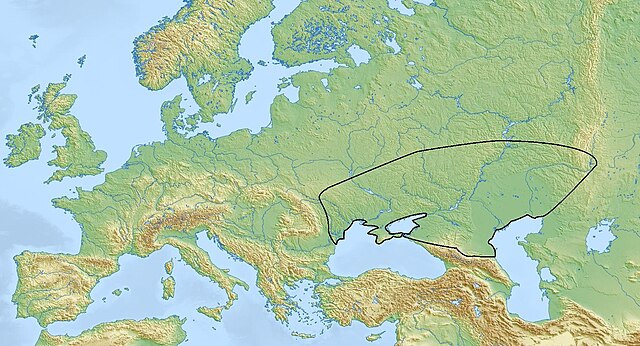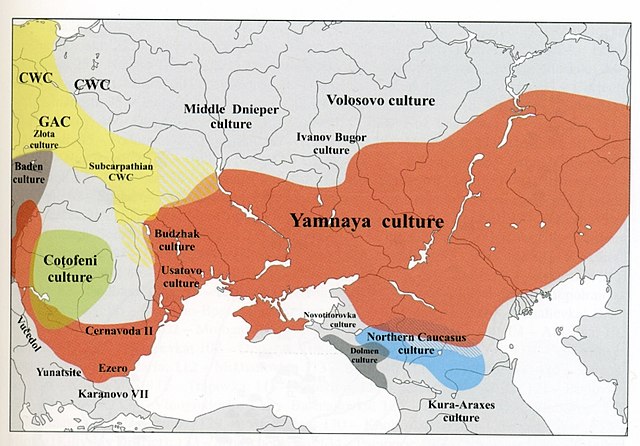Poltavka culture was an early to middle Bronze Age archaeological culture which flourished on the Volga-Ural steppe and the forest steppe in 2800—2100 BCE.
Poltavka culture
Horses were domesticated on the Pontic-Caspian steppe.
The Yamnaya culture or the Yamna culture, also known as the Pit Grave culture or Ochre Grave culture, is a late Copper Age to early Bronze Age archaeological culture of the region between the Southern Bug, Dniester, and Ural rivers, dating to 3300–2600 BCE. It was discovered by Vasily Gorodtsov following his archaeological excavations near the Donets River in 1901–1903. Its name derives from its characteristic burial tradition: Я́мная is a Russian adjective that means 'related to pits ', as these people used to bury their dead in tumuli (kurgans) containing simple pit chambers.
Yamnaya culture
Largest expansion of the Yamna(ya) culture. Modified from c. 3500 origins of Usatovo culture; 3300 origins of Yamna; c. 3300–3200 expansion of Yamna across the Pontic-Caspian steppe; c. 2700 end of Trypillia culture, and transformation of Yamna into Corded Ware in the contact zone east of the Carpathian mountains; 3100–2600 Yamnaya expansion into the Danube Valley.
Yamnaya culture grave, Volgograd Oblast
Sredny Stog culture (c.4500-3500 BCE)






